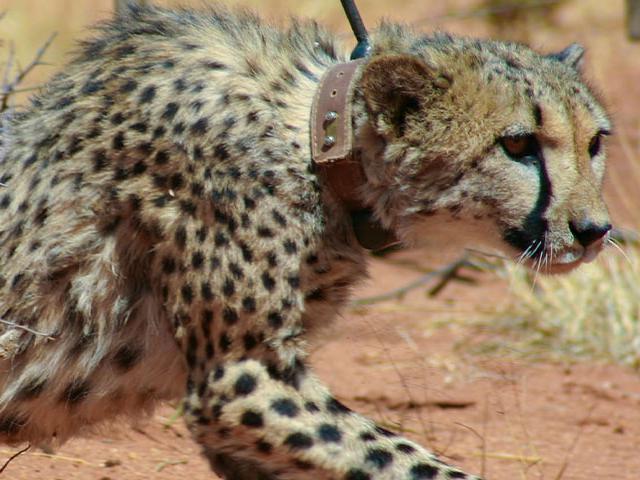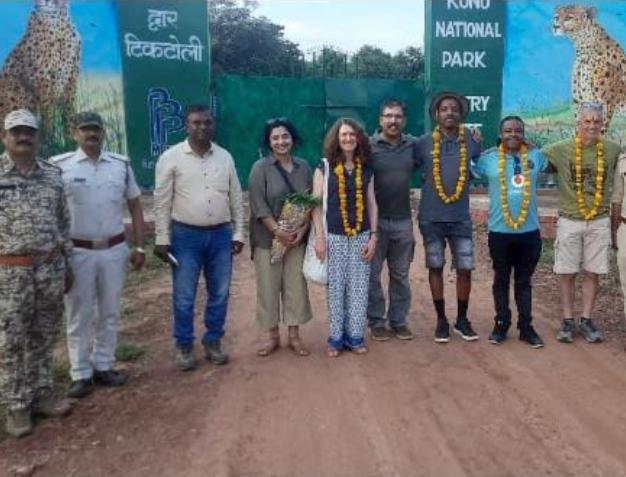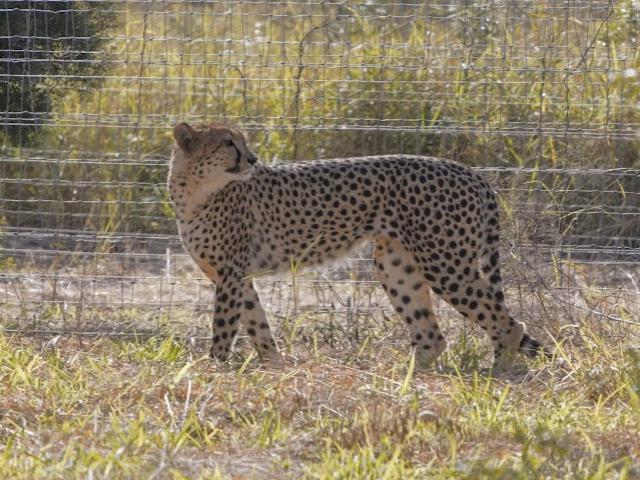After the release of 8 cheetahs from Namibia on September 17 in Kuno National Park (KNP) of Madhya Pradesh, South Africa will send an additional 12 cheetahs to India in October. More and more cheetahs will continue to be airlifted to India in the coming years till the “genetically viable population” of the spotted cat is not established.
Cheetah Top Up To Continue To Create Genetically Viable Population
Though an MoU is yet to be signed with South Africa, it is likely to be done soon. Recently a team of South African officials visited Kuno to take first hand information. Among others, the team comprised scientific co-ordinator, South African National Biodiversity Institute, Michele Pfab, deputy director CITES Policy Development & Implementation at department of Environmental Affairs, Mpho Tjiane , Policy Analyst at the department of Forestry, Fisheries and Environment, Dzunisani Makhubele. The team is likely to submit its report soon and it would be followed by translocation cheetah to India.
Also read: Namibian Cheetahs To Fly To Kuno National Park On September 17
Vincent van der Merwe, coordinator of the Endangered Wildlife Trust’s Cheetah Metapopulation projecthas been quoted in international media , “For a genetically viable population in India in the long-term you need at least 500 individuals, so every year we will send eight to 12 animals, to top them up, to increase numbers, to bring in new genetics until they have a viable population.” In the same report the news agency AP reported “South Africa is flying cheetahs to India and Mozambique as part of ambitious efforts to reintroduce the distinctively spotted cats in regions where their population has dwindled”. There are about 7000 African cheetahs left in the wild while the number of Asian cheetahs, only in Iran, is very small.
Kuno’s Tribal Unhappy
Madhya Pradesh forest department was nurturing KNP for Asiatic lions. The preparation was going on for almost 2 decades and in between the park was upgraded from a sanctuary to a national park by adding more forest land to its buffer. But the politics of conservation did not allow KNP to become the second home of endangered lions found only in Gir lion landscape of Saurashtra region of Gujarat. A supreme court order in 2013 lion also could not facilitate the arrival of just one pair of Asiatic lion from Gir.The Action Plan for Introduction of Cheetah in India said, “ KNP has been chosen as the first site for the cheetah introduction since it is ready with the required level of protection, prey, and habitat to house the cheetahs.”
Also read: Jungle Book Comes Alive in Pench Tiger Reserve
The park, located in the central India state of Madhya Pradesh bordering Rajasthan, was estimated to have a current capacity to sustain 21 cheetahs. “ Once a cheetah population establishes itself within KNP, dispersers would colonize the landscape and potentially hold 36 individuals”, the action plan claims. Spread over 748 sq. km in area, Kuno is devoid of human settlements and forms part of Sheopur-Shivpuri deciduous open forest landscape . Large number of tribals sacrificed their ancestral land and moved out from the park to give way to lion and not cheetah which is why Kuno is probably the only wildlife site in the country where there has been a complete relocation of villages from inside the park. Many of them lament that their sacrifice has gone wasted.
Threat of Preator Become Prey Looms Large
The other sites recommended for holding and conservation breeding of cheetah in India, in controlled wild conditions are Nauradehi Wildlife Sanctuary and Gandhi Sagar Wildlife Sanctuary both in Madhya Pradesh ,Shahgarh bulge in Jaisalmer, Mukundara Tiger Reserve as fenced enclosure of 80 sq.km, and Rajasthan. The news agency AP retorted that “ Indian officials say the move will aid global cheetah conservation efforts since their range in Africa is limited. The plan is for the cats to be kept in large enclosures in central Indian forests, protected from other predators like leopards or bears, to give them time to get used to their new home. The enclosures have prey — like deer and antelope — which scientists hope the cheetahs will hunt. After a few months of close monitoring, the cheetahs will be radio-collared and released”.
Also read: Marathon Tiger Rescue Operation Near Pench National Park
Veteran conservationist Valmik Thapar who is working on his book on Cheetah has been quoted in media saying, “ the cheetah project waste of taxpayers’ money”. He said, “ The African cheetah can never be introduced into the wilds of India. We don’t have any habitat to ensure a natural reintroduction. I think you can reintroduce cheetahs in a fenced enclosure of 100-200 sq km with an expenditure of millions of dollars, because the fence has to be four metres high. You can make sure that they are hand-fed or baited. And you can have people coming in to watch the animals, as in a drive-in enclosure. But reintroducing it in the wild is impossible.” Researchers like Ravi Chellam have termed it ,” a vanity project”.
Representational images: First Image from cheetah.org. Image 2 and 3 about visit of S African authorities to Kuno courtsey district administration, last image courtsey Adrian Tordiffe, Pretoria University




